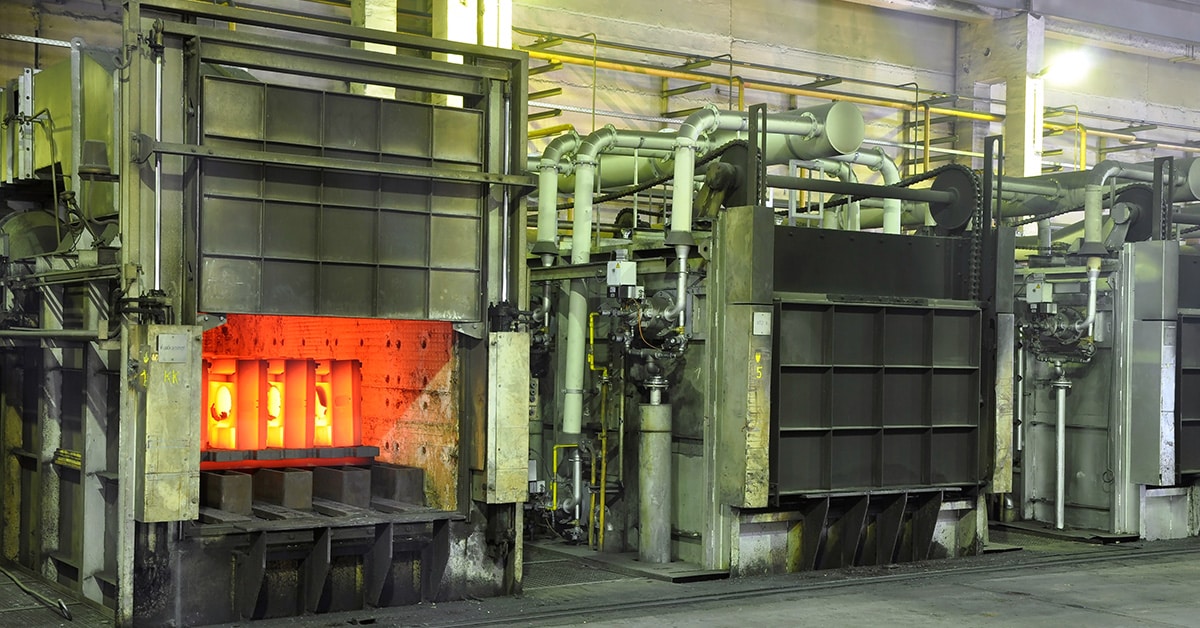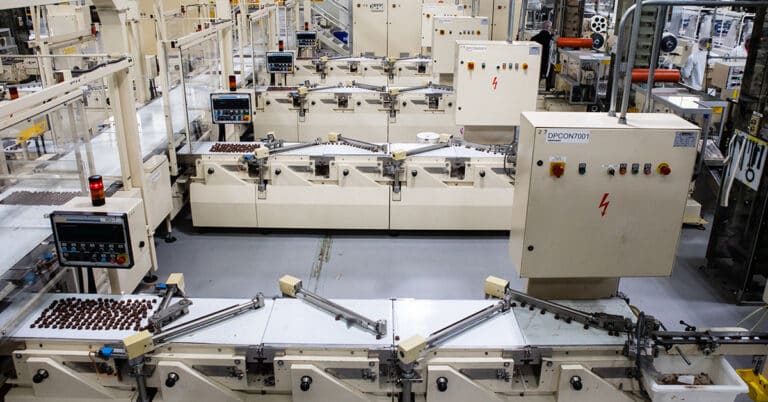An unexpected shutdown of an industrial furnace is disruptive and often very expensive. A bigger problem though can be when it’s not operating correctly. This can result in products not receiving the right treatment, leading to potential warranty claims, recalls and even liability issues.
Industrial furnaces are used to modify the physical and chemical properties of products or materials. Their main functions include hardening, stress-relieving, toughening and strengthening metal parts. Additionally, they are used for sintering metal powders and firing ceramics and ceramic glazes. Unlike industrial ovens, which handle drying and curing processes, industrial heat treatment furnaces operate at much higher temperatures.
To avoid potentially serious and expensive problems, industrial furnace cleaning, servicing and repair should be covered by a preventive maintenance program. This blog explores the reasons and methods for doing so and provides a checklist for manufacturers seeking to upgrade their efforts.
Types of industrial heat treatment furnaces
High-volume manufacturers typically use continuous furnaces, while batch furnaces are used for smaller quantity work and special processes. The differences in design and operation influence the type and extent of maintenance needed.
A batch furnace is a metal enclosure with a door, a heating mechanism and lots of insulation, (technically, refractory material, either solid or fibrous), plus door seals to keep the heat inside. Parts or materials are moved in and out of these box furnaces in baskets, in cages or on metal shelves.
A variation of the box furnace is the controlled-atmosphere furnace. These furnaces can be filled with gases such as nitrogen, or alternatively, air might be sucked out, in which case it becomes a vacuum furnace.
Another type of batch furnace is the vertical or pit furnace. These are essentially a hole in the ground that’s loaded and unloaded from overhead.
Continuous furnaces are long, open-ended chambers with a mesh or roller conveyor running the entire length. They may have zones set at different temperatures and can have controlled atmospheres.
Most industrial heat treatment furnaces are heated by gas. Electric heating is uncommon, although vacuum furnaces and those used for melting metal may use induction.
Batch furnaces are equipped with a controller to set temperatures and times. Continuous furnaces include speed control to regulate the duration the product remains at the set temperature. The controller uses one or more thermocouples to measure the furnace temperature and adjust the heating as necessary.
Common industrial furnace issues
Neglecting routine maintenance on industrial furnaces, whether by repeatedly postponing or skipping it entirely, can lead to several issues, including:
- Increased energy consumption
- Product contamination
- Material properties outside required limits
- Safety hazards
- Unplanned stoppages
These arise from:
- Wear of and damage to refractory materials, linings and seals: Heat cycles can cause cracks or spalling, reducing insulation and efficiency. Careless loading can damage batch oven seals.
- Dirty or deteriorated gas burners or failure of heating element: Poor combustion and inconsistent heat input leads to partial heating zones or under/overheating.
- Build-up of dirt on furnace components: The heat exchanger, plus thermocouples and fans, are susceptible, leading to uneven temperature distribution.
- Blocked or partially blocked flues: Exhaust gases must flow out easily or there’s a risk of fumes and poor furnace temperature control.
- Contamination/atmosphere control: In controlled-atmosphere furnaces, leaks or improper gas flow can cause oxidation or poor results.
Industrial furnace maintenance checklist
In both continuous and batch manufacturing, shutting down an industrial furnace for inspection is challenging. This process involves a lengthy cool-down period, followed by a long warm-up, causing significant disruption.
Details of recommended furnace cleaning and inspection vary by type and manufacturer. The following checklist should be tailored to suit specific circumstances and conditions.
Daily/weekly:
- Clean control panel readouts and thermocouple indicators and check for unusual indications.
- Check gas lines or electrical connections for leaks, loose wires or worn insulation.
- Verify condition of door seals or gaskets.
- Inspect flues for blockages and leaks.
Monthly/bi-monthly:
- Assess burners or heating elements for signs of corrosion or uneven flame patterns.
- Clean pilot assemblies, sensors and blowers/fans as specified by OEM guidelines.
- Analyze combustion gases to verify air-fuel ratio is correct.
- Calibrate thermocouples, temperature controllers or atmosphere sensors.
- Inspect refractory linings visually for cracks, crumbling or hot spots.
Quarterly/seasonal:
- Once the furnace is shut down and cool, vacuum or clean the interior to remove scale, dust and residue.
- Check the operation of safety interlocks, limit switches and emergency shutoffs.
- Lubricate moving parts (door mechanisms, conveyor drives and linkages, bearings).
- Document temperature uniformity testing results to ensure consistent heat distribution.
Annual/off-season:
- Conduct a full inspection of refractories; patch or replace as needed for structural integrity.
- Overhaul or replace worn burners, fans or other major mechanical components.
- Update control system software or PLC logic if improvements are available.
- Maintain a detailed log of all repairs, parts replaced and system upgrades.
Integrating predictive maintenance
Opportunities to inspect industrial furnace parts, such as refractory linings, are often scarce, leading to extended intervals between inspections. This makes any condition information that can be obtained very useful for early fault detection and estimating when furnace repair will be needed.
Information can be obtained from a mix of sensors. Most furnaces will have industrial temperature monitoring devices that can detect when temperature zones drift out of limits, but more sophisticated data capture is also feasible.
This includes installing vibration monitoring sensors on fans and motors, measuring fuel gas and exhaust flows, and analyzing exhaust gas composition. Additionally, deviations in burner flame patterns can be observed, which may indicate dirt build-up or impending component failure.
Predictive maintenance entails capturing and analyzing this sensor data to identify trends and estimate how failure probabilities will rise over time. With this information, maintenance planners can schedule furnace maintenance for a time when it won’t interrupt production.
This kind of health monitoring and predictive maintenance analytics is best performed manually using advanced analytical tools to anticipate when industrial furnace repair will be needed.
Sensor-based monitoring is an aspect of improving industrial reliability. ATS can help businesses optimize furnace performance, cut downtime and ensure uniform heat treat quality.
Upgrade furnace reliability and performance
Industrial heat treat furnace condition plays a major role in both product quality and industrial energy efficiency. Gradual deterioration can go unnoticed, but if it gets to the point where the furnace breaks down or has to be stopped, major impacts on productivity usually result.
Thorough furnace cleaning, plus regular checks, and good recordkeeping are important, but significant operational improvement requires predictive maintenance. Trend analysis can show when an industrial furnace service will be necessary. For operations involving heat treating furnaces, this reduces unplanned shutdowns and all associated disruption.
ATS helps manufacturers in many industries to improve their maintenance operations. This includes specialized heat treatment services, advanced sensor monitoring solutions and reliability consultations to optimize furnace operations. Contact us to schedule an in-depth discussion.






